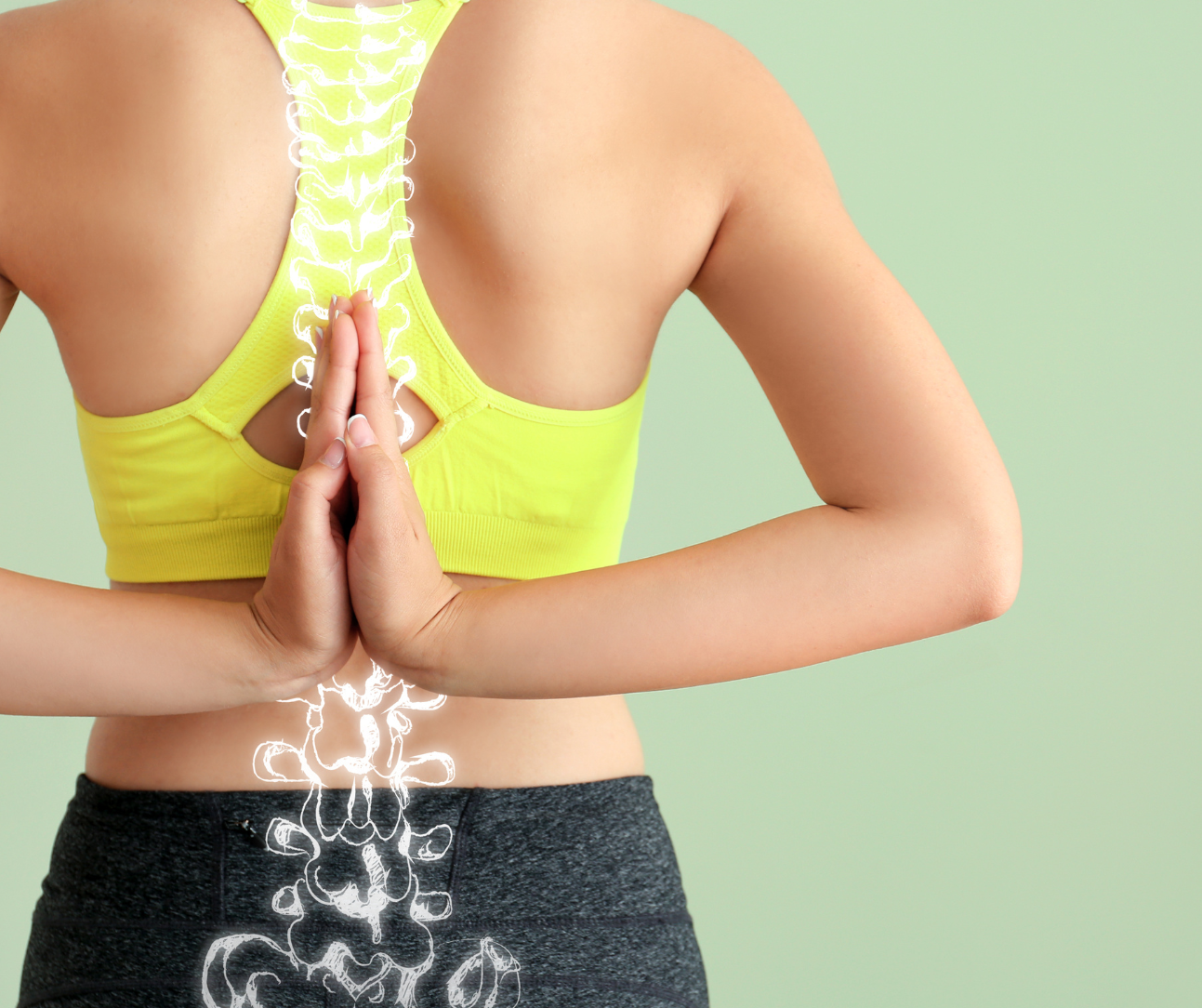Yoga for Bone health stems from the work of Dr Loren Fishman. Dr Fishman has carried out multiple studies looking at the impact of yoga for bone health. In a seminal longitudinal study, Dr Fishman and his colleagues studied this by collecting data at the start of the study on the 741 participants’ bone density measurements, blood and urine chemistry and X-rays of their spines and hips. The average age of participants was 68, 83% of whom had osteporosis or osteopenia (the precursor to osteoporosis).
Each participant was given a series of poses to do each day, with 227 participants adhering to regular practice.
A decade later, the same data was collected. The findings for the 227 participants who adhered to regular practice showed improved bone density in the spine and femur. Improvements were also seen in bone density in the hip but this was not statistically significant.
Another area that Dr Fishman was interested in was vertebral fracture rate. Vertebral (or spinal) fractures occur in osteoporosis and can be very painful or silent. Prior to the study, the total participant group had a total of 109 fractures. At the time the study was submitted for publication there had been “no reported or x-ray detected fractures or serious injuries of any kind related to the practice of yoga in any of the 741 participants”.
A sample group of 18 of the study participants showed that they had “better internal support of their bones, which is not measured by a bone density scan but is important to resisting fractures,”.
In an earlier pilot study, Dr Fishman and his team began with 187 people with osteoporosis and 30 with its precursor, osteopenia. But compliance with the yoga practice was poor with just 11 of the participants adhering to 10 minutes of yoga daily for two years.
All of the 11 participants increased bone density in their hips and spines, while seven patients who served as controls continued to lose bone. In addition to this “five patients with osteopenia were reclassified as normal; 2 patients with osteoporosis are now osteopenic. There were no injuries”.
What about other types of arthritis?
Great question! “Arthritis” means joint inflammation (the suffix “-itis” means inflammation), with joints being the places where two or more bones meet. While there are many different types of arthritis they all affect the joints. This inflammation can be caused my autoimmune disease, illness, wear-and-tear, genetics, trauma and a multitude of other factors. Dr Fishman’s studies demonstrate that bone density can be increased through yoga practice and that fracture risk can be reduced.
So let’s take a look at some other studies:
A pilot study by Badsha et al., (2009) found that 12 sessions of yoga for Rheumatoid Arthritis (RA) was able to demonstrate statistically significant improvements in RA disease parameters.
In 2015 a study by Moonaz et al., into the impact of yoga for sedentary adults with arthritis found that physical pain, general health, vitality, and mental health scales were all shown to significantly improve. And that there were no adverse events relating to the yoga practice.
So what does this tell us?
That yoga has proven benefits in the area of bone health but that sustaining changes (such as a regular practice) are difficult, especially where a change in habits is concerned.
Why Yoga for Bone Health?
Dr Loren Fishman who has studied the impact of yoga on bone health says that, “Yoga puts more pressure on bone than gravity does,” he said in an interview. “By opposing one group of muscles against another, it stimulates osteocytes, the bone-making cells.”
By the age of 65, knee x-rays for at least a third of us will show some sign of arthritis.
Dr. Fishman’s research suggests that incorporating yoga into daily routines can be a valuable strategy for maintaining and improving bone health, especially for those at risk of osteoporosis. The side effects to yoga are lower with Dr Fishman saying they “include better posture, improved balance, enhanced coordination, greater range of motion, higher strength, reduced levels of anxiety and better gait.”
Is Yoga for Bone Health a cure-all?
No. Yoga for bone health is based on the empirical works of Dr Fishman and other colleagues that have shown ways to safely practice yoga which have benefitted patients who have arthritis.
Any empirical work is looking at an overall statistically significant pattern. This means that there will be people that may not experience improvements in bone density with regular practice. In one documented case the practice assisted with fracture prevention in spite of there being no improvement in bone density. While fracture risk is decreased by an increase in bone density, fracture risk is also reduced by “better balance, improved strength, greater range of motion, enhanced coordination and lower anxiety, all of which are produced by yoga, not medicine.
I’m not bendy, is this class for me?
Of course. The aim of this class is to help you. We will be on hand to give you modifications throughout the class.
References
Topics in Geriatric Rehabilitation (lww.com)
Topics in Geriatric Rehabilitation (lww.com)
Advice on Practicing Yoga in Middle Age, Part 2 – The New York Times (nytimes.com)
Learn about our classes here & Book into our yoga for bone health classes by clicking here






